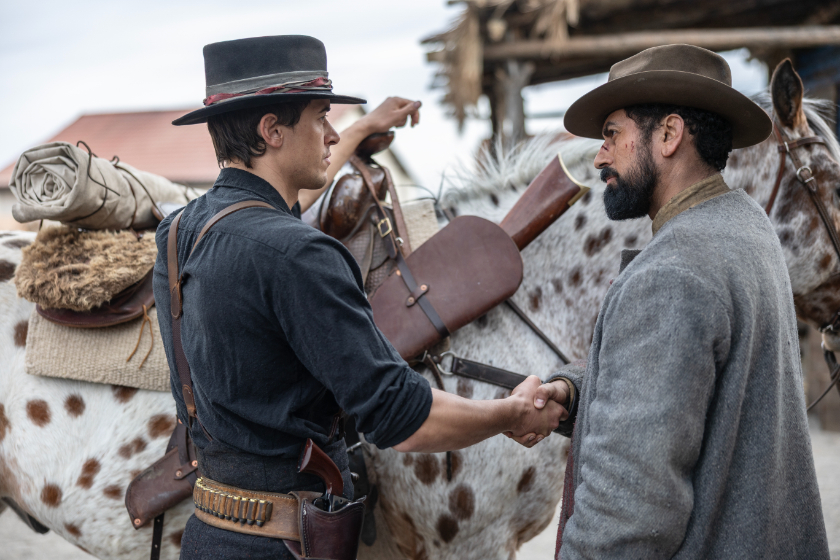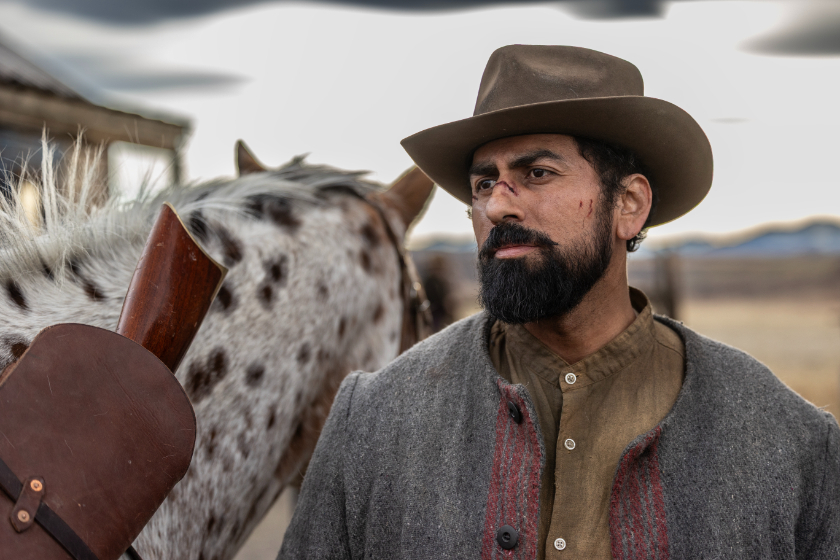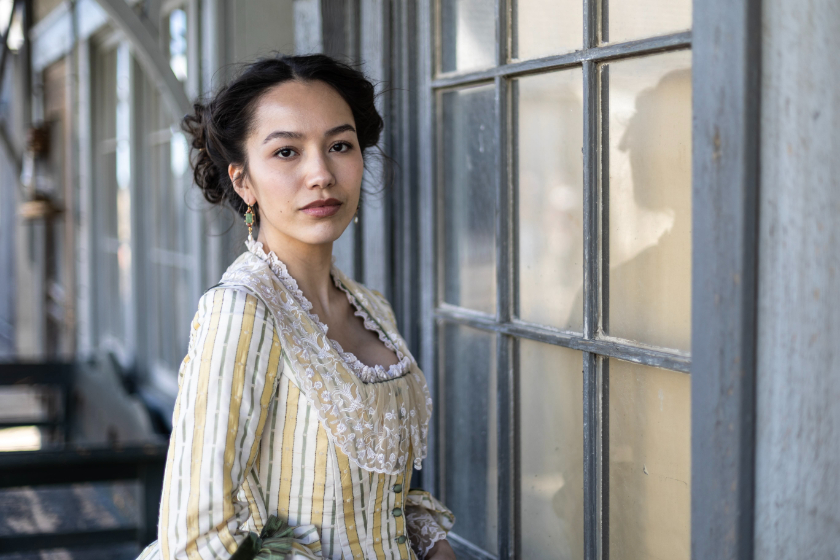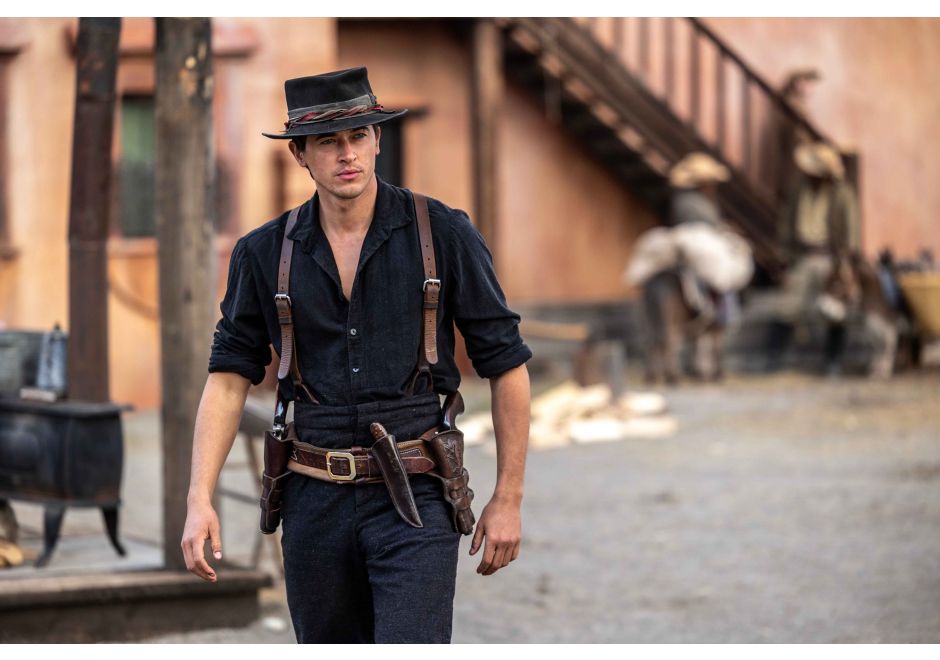If you love historical TV shows with as much action and violence as there is intrigue and romance, you’re likely a fan of Michael Hirst, creator of shows like The Tudors and Vikings. But when Hirst pitched his next epic, he didn’t pitch royals behaving badly or warrior women. Instead, he pitched a childhood hero.
“Billy was one of my first heroes,” Hirst says, sharing how as a boy growing up in the north of England he imagined himself, “on the white horse, galloping to school.” Decades (and several hit series) later, that boyhood fascination became Billy the Kid, now heading into its third and final season on September 28 on MGM+.
Billy the Kid offers a masterclass in how to turn history into urgent, character-driven television by reframing the outlaw not as a criminal or hooligan, but as a prism for freedom, justice, and the American soul.


Redeeming a Legend
Before committing to writing about his childhood hero, Hirst had to first investigate whether the legend merited his hero worship. “I had to research whether Billy was worth an entire show. I needed to know who he was, really, and what he did. I’m happy to say that Billy was a really interesting guy, a very good guy in many ways. He was well-loved by people who knew him and was a great defender of the Mexicans. He actually fought against injustice.”
That understanding of the real-life Billy drives the show’s point of view. “When people, certainly in America, think of outlaws, [they think] they’re pathological killers and this was not true of Billy. He wanted to go straight and he couldn’t. He wasn’t allowed to.”
It’s a classic Western engine – revenge and justice – infused with humanity. “It’s not bloodthirsty. His hatred is targeted,” Hirst says, even as Billy balances new stakes at home. “His girlfriend Dulcinea (Nuria Vega), gives birth to a child. He has more to live for.”
Heartfelt Emotion Wins Every Time
If The Tudors distilled royal power into primal desire and Vikings made conquest feel intimate, Billy the Kid Season 3 goes for the heart. “It’s the most emotional thing I’ve ever written,” Hirst says. “There are so many deaths of significant characters who I love, and who Billy loved. This is a season in which Pat Garrett (Alex Roe), and the forces of law and order really decided to get Billy and hunt him down. And Billy sometimes turns the table on them, but there’s much sadness in the show and emotion.”
That emotion isn’t nostalgia, however, it’s based on intense historical exploration. “It wasn’t my childhood fancies, it was what came out of the research,” Hirst says. “For me, he became a rounded figure. Someone I could imagine meeting and I grew absolutely to love him.”


Why We Love Outlaws (and How to Write Them)
Hirst’s take on the outlaw archetype is both simple and subversive. “Many of us dream of being freer than we are. We feel that a lot of laws are unfair and if only we could get out of those obligations and live a slightly freer life.” In America, he feels that fantasy is mythic. “Identifying with an outlaw helps you for a few hours to feel a little freer. It’s written into the American soul, the need to be free. But it’s almost impossible to accomplish. Which is why every outlaw, in the end, was shot down.”
Outlaw stories work best when they dramatize the tension between personal freedom and social constraint. The antagonist in Billy the Kid isn’t only a marshal, it’s a system called the Rings, full of corruption and prejudice that Billy pushes against.
Making History Feel Current
Hirst builds relevancy not by cut-and-pasting modern issues onto period plots, but by finding the timeless challenges that parallel issues we see today. “The first thing is immigration. But also justice and whether everyone having guns is a good thing. I always find some way of connecting to the period because all time is continuous,” he says.
He learned a big lesson while pitching The Tudors to Showtime network heads who said Middle America doesn’t want to watch a show with men in tights. So, Hirst suggested comparing Henry VIII to a 22-year-old suddenly inheriting his father’s huge car business, which became a metaphor for power, wealth, entitlement, and consequence. The takeaway is to pitch the character and their situation first, then worry about the details of the time period.
Season 3 is the Most Exciting Yet
Hirst’s pitch for watching Season 3 is both political and personal. “The final season is definitely the most emotional and powerful. There are many heartbreaking moments, but there is also a real sense of the political and social reality of life in New Mexico at the end of the 19th century. Billy fought against injustice, treatment of Mexicans, the corrupt power of the Rings. This side of him has never really been told.”


Crafting Your Own TV Pilot
Hirst has this advice for anyone wanting to write their own historical TV pilot: start with character, not a sequence of events, and go deep. “Start from the inside out, not the outside in. Don’t start with what you know about the things this person did. Start with feeling your way into who [they are].” To do this, he says you need to lead with empathy. “I would start down this road of identification and understanding and empathy. Think of them as someone who, if they were alive today, what would they be like?”
He also suggests building your pilot around a clean, classical spine like revenge vs. justice, authoritarianism vs. human rights, corruption vs. honor and virtue. Once you have that, you can then complicate it with personal storylines like romance, family and the pursuit of dreams.
Hirst also encourages writers to take risks. “You can push the boundaries and people will go with you, if they trust you as a writer.”
Billy the Kid Season 3 is streaming on MGM+

